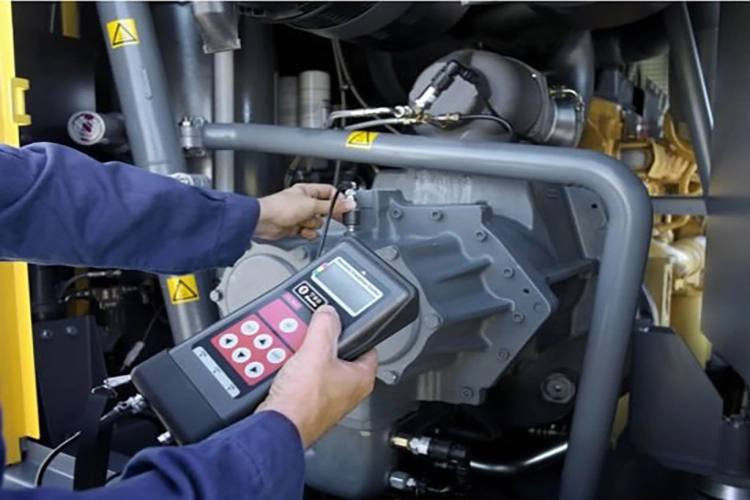Air Audit
- Home »
- Air Audit
Buy Air Audit
Colt Industrial Air Audit is a comprehensive assessment conducted to evaluate the efficiency and compliance of industrial air systems within a facility. It involves inspecting equipment such as air compressors, dryers, filters, and distribution systems to identify potential energy savings opportunities, maintenance issues, and regulatory compliance requirements. By conducting an Industrial Air Audit, businesses can optimize their air systems, reduce energy consumption, improve productivity, and ensure environmental compliance. Additionally, our audit helps in identifying cost-effective solutions to enhance the overall performance and sustainability of the air systems, leading to long-term benefits for the organization.
Air Audit
Measuring the Free Air Delivery (FAD) of an air compressor can be challenging. With a proper flow meter and some mathematics this task is manageable.
The ultimate job of an air compressor is to produce compressed air by sucking in ambient air, pressurizing or compressing it, and discharging it into the compressed air network. Air compressor power is defined by its power rating and the FAD specifications stated by the manufacturer when new. However, as time goes by, an on-site measurement can be very useful. There are several simple questions, which eventually explain the performance of an air compressor:
- How much electrical power is my air compressor consuming?
- How much electrical power is my air compressor consuming?
- What's my pressure profile?
To answer these questions, you may want to measure your air compressor on your own. Performance measurements usually comes into two types:
- Temporary performance measurement, done as part of system assessments, or before investing in a new air compressor.
- Permanent performance measurement, which is performed to monitor the performance at all times in order to trigger services or overhauls timely.
How is FAD Defined?
Flow is measured in volume per unit of time. But air can be compressed easily and its volume changes with the temperature. Meanwhile, the air that an air compressor sucks in contains humidity (water vapor), and the air density (air per m3) changes with variation in the altitude, temperature and weather patterns
Clause 3.4.1 of ISO1217 states: “Actual volume flow rate of a compressor is the actual volume of gas, compressed and delivered at the standard discharge point, referred to conditions of total temperature, total pressure and composition prevailing at the standard inlet point.”
This is the actual volume of air delivered by the air compressor referred back to the conditions of the free air at the compressor inlet. So, FAD is the amount of free air drawn into the compressor that is actually delivered by the air compressor at its compressed air outlet. FAD uses volumetric flow units such as m3/min and l/s etc. The types of flow meters allowed by ISO 1217 initially calculate a mass flow of air, which is then converted to an intake volume flow rate based on a value for the density of the air at the intake to the air compressor. Ideally these are the actual conditions, but for convenience, ISO 1217 suggests the following conditions, provided the actual conditions are within an allowable tolerance:
- Pressure = 1 bar absolute
- Temperature = 20 °C
- Relative humidity = 0%
Corrections are then made for the intake humidity and the speed of the motor compared to its rated speed.
To answer this question, you may want to measure your air compressor on your own. Performance measurements usually comes into two types:
- Temporary performance measurement, done as part of system assessments, or before investing in a new air compressor.
- Permanent performance measurement, which is performed to monitor the performance at all times in order to trigger services or overhauls timely.
Flow is measured in volume per unit of time. But air can be compressed easily and its volume changes with the temperature. Meanwhile, the air that an air compressor sucks in contains humidity (water vapor), and the air density (air per m3) changes with variation in the altitude, temperature and weather patterns
Clause 3.4.1 of ISO1217 states: “Actual volume flow rate of a compressor is the actual volume of gas, compressed and delivered at the standard discharge point, referred to conditions of total temperature, total pressure and composition prevailing at the standard inlet point.”
This is the actual volume of air delivered by the air compressor referred back to the conditions of the free air at the compressor inlet. So, FAD is the amount of free air drawn into the compressor that is actually delivered by the air compressor at its compressed air outlet. FAD uses volumetric flow units such as m3/min and l/s etc. The types of flow meters allowed by ISO 1217 initially calculate a mass flow of air, which is then converted to an intake volume flow rate based on a value for the density of the air at the intake to the air compressor. Ideally these are the actual conditions, but for convenience, ISO 1217 suggests the following conditions, provided the actual conditions are within an allowable tolerance:
- Pressure = 1 bar absolute
- Temperature = 20 °C
- Relative humidity = 0%
Corrections are then made for the intake humidity and the speed of the motor compared to its rated speed.




